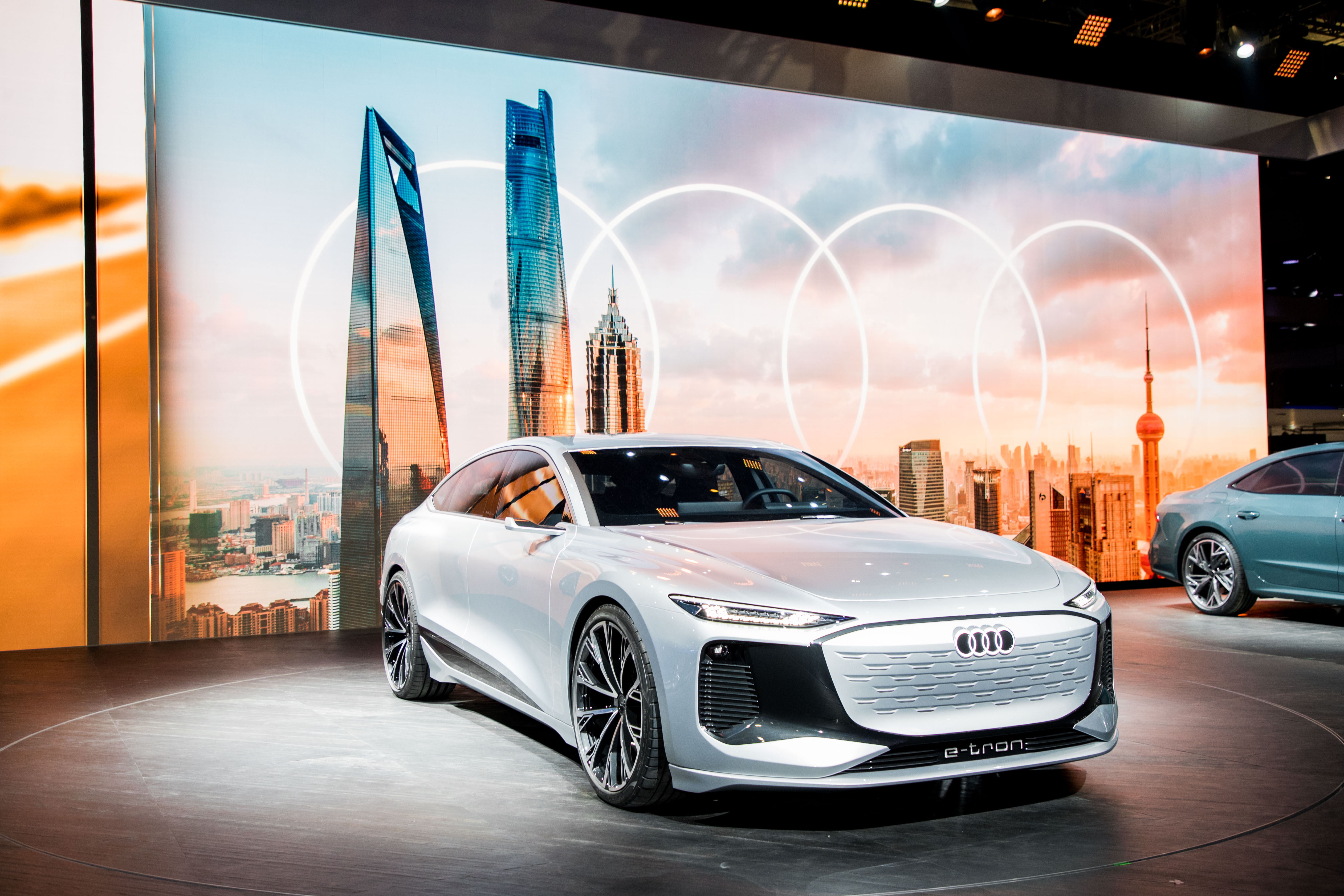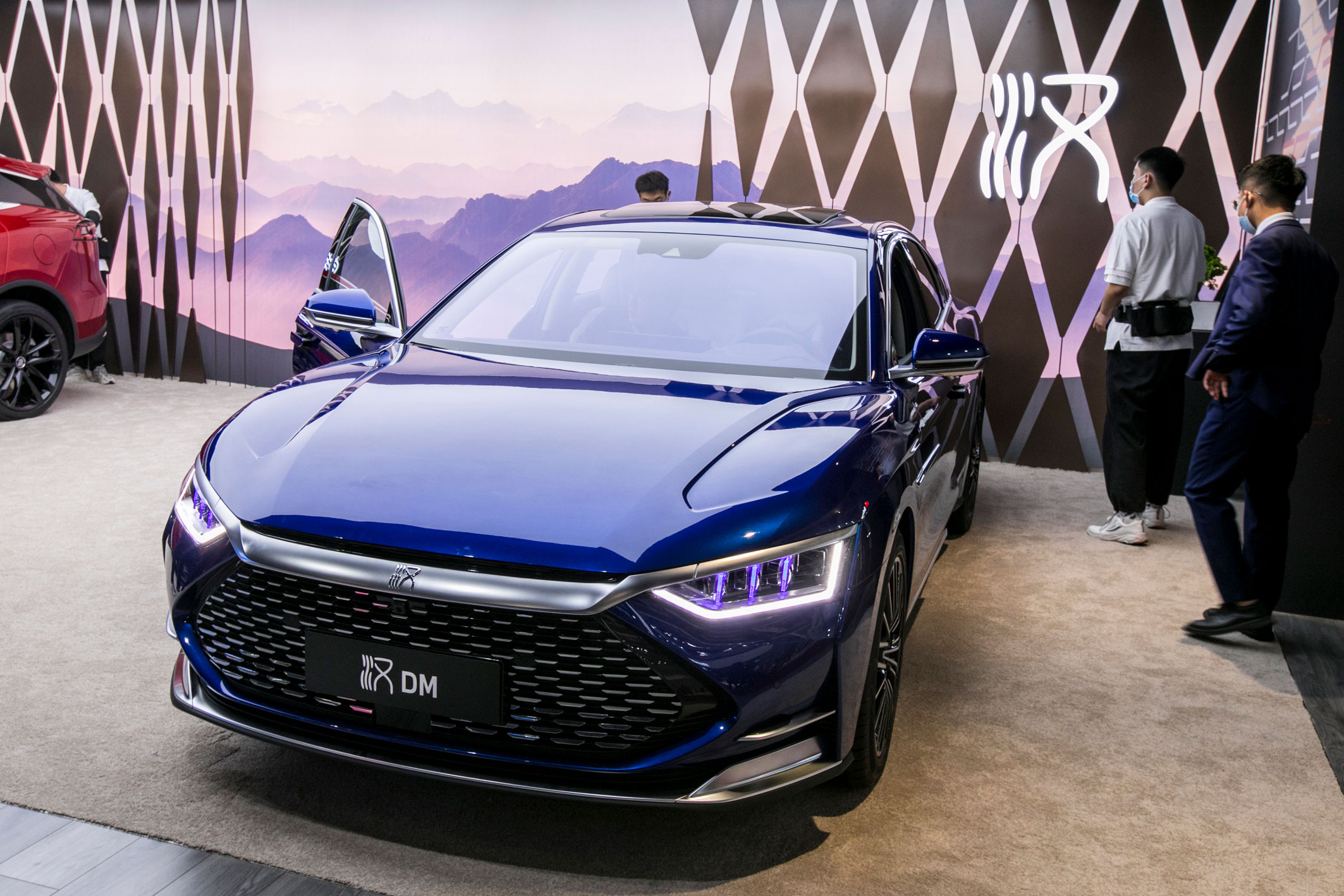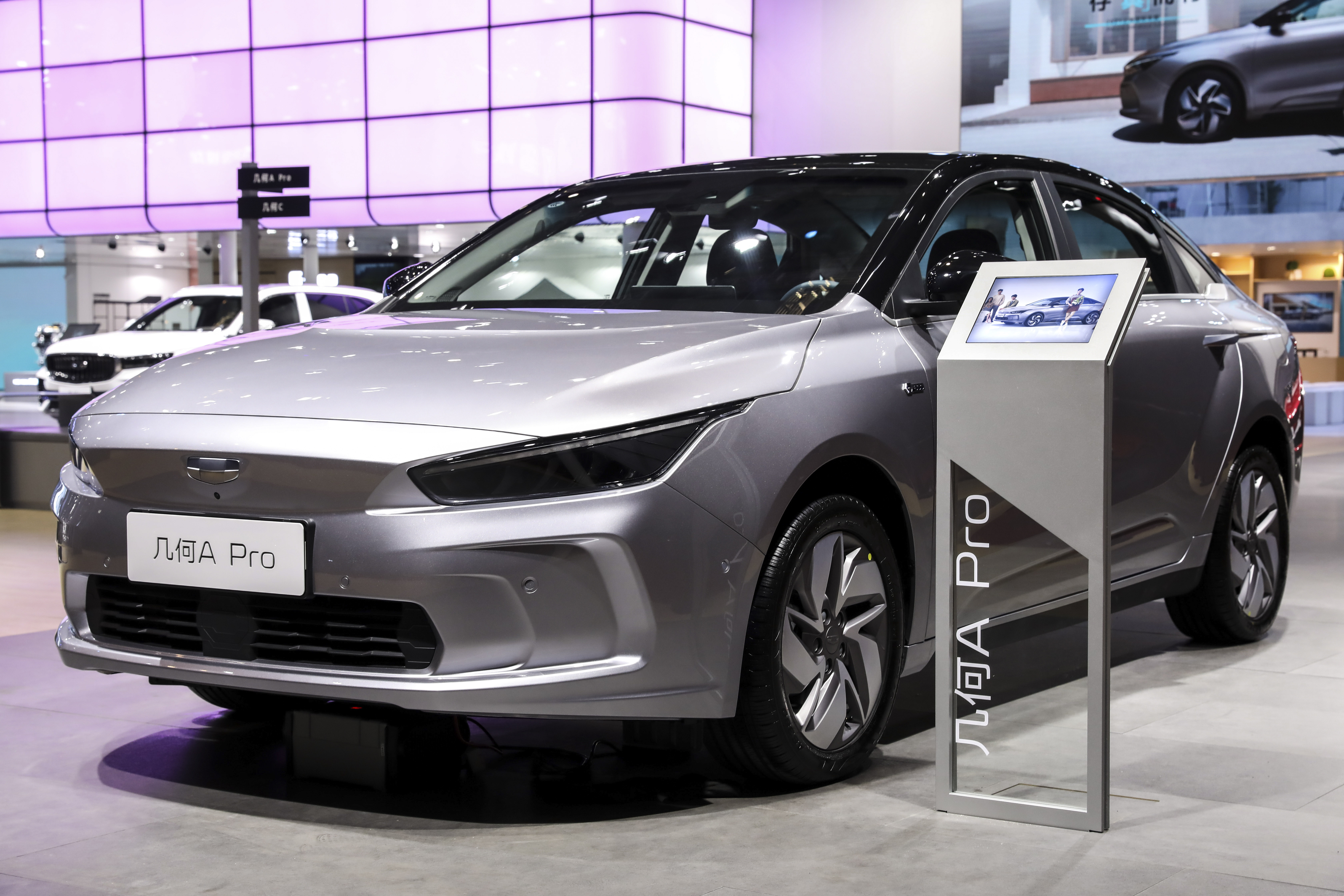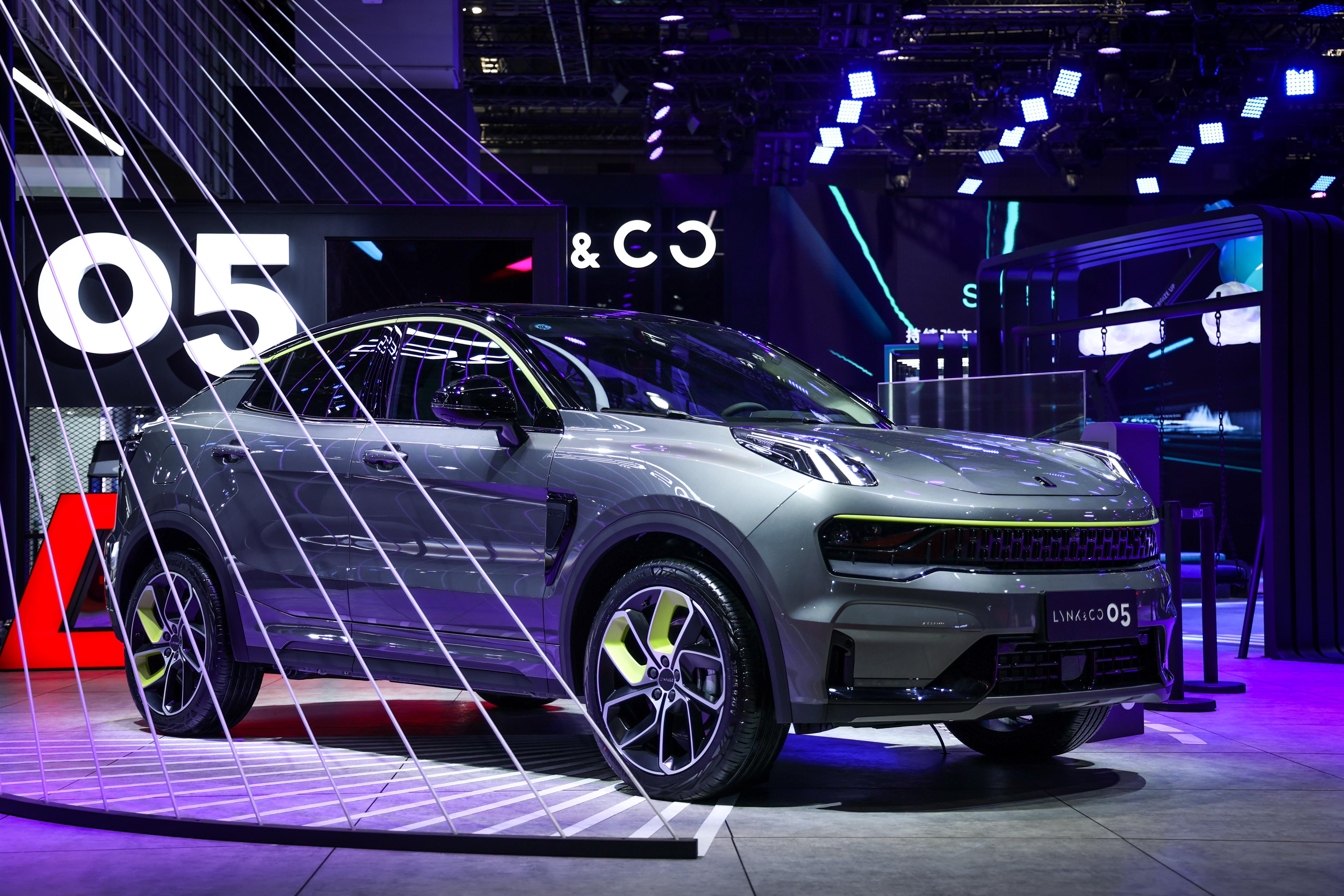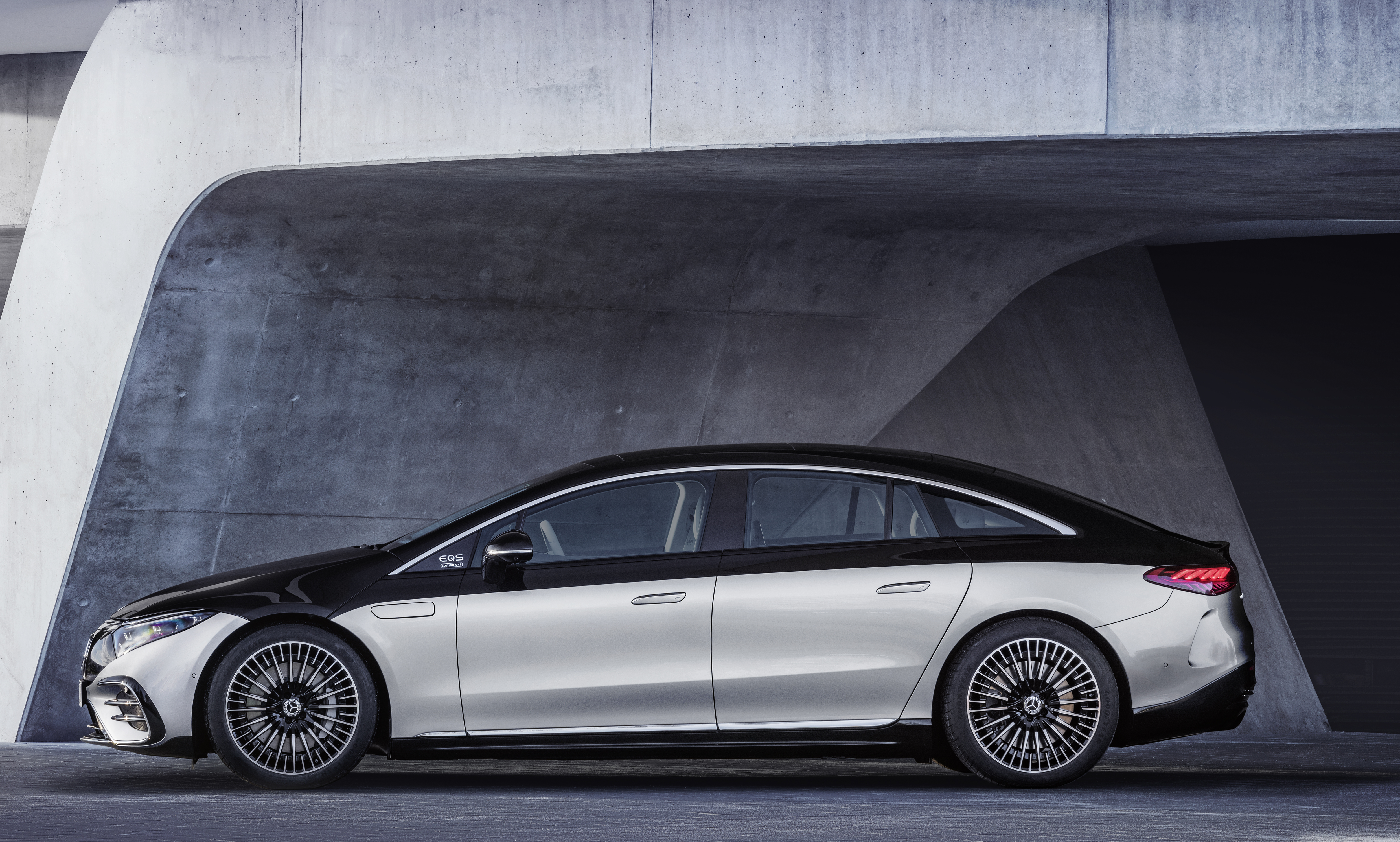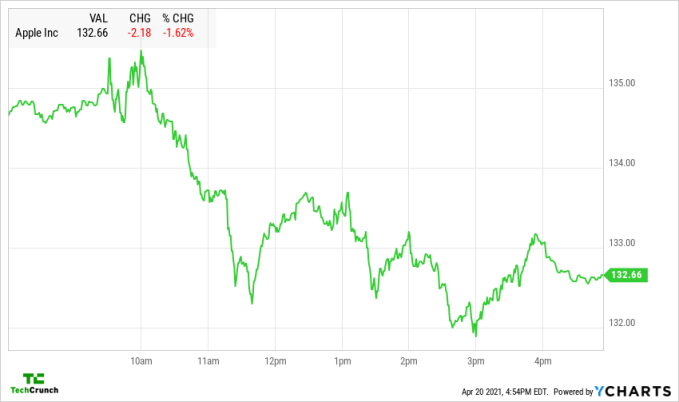The 19th annual Shanghai Auto Show delivered a bevy of electric and tech-centric vehicles this year. Chinese, European and U.S. automakers showed off their latest offerings in every price segment, from the budget-minded Wuling Hong Guang Mini via a joint venture between SAIC Motor Corp., General Motors Co. and Liuzhou Wuling Motors Co. to the luxury Mercedes EQS — and everything in between.
Several automakers touted the capabilities of their driver assistance systems, using terminology that suggested they could be autonomous if only regulators allowed it. Let’s be clear, these systems are not autonomous. Other automakers stopped short of those claims, but did publicize the software capabilities of their vehicles — a movement that has been underway since Tesla rose in popularity.
Here’s what caught our eye at the show. Don’t miss TechCrunch’s Rita Liao’s Chinese automotive coverage that also came out of the auto show, including how Tesla is working on vehicles tailored to Chinese consumers as complaints increase about the quality of its electric vehicles.
Audi
Audi shared the spotlight with its Chinese partner companies FAW and SAIC this year. The companies showed four world premieres, including the Audi A6 e-tron concept vehicle, an updated Audi Q5L, the Audi A7L and an SUV study, which is still under wraps, named Audi concept Shanghai.
The Audi Q5L SUV will continue to be manufactured in the Changchun plant in the FAW-VW joint venture. Meanwhile, the Audi A7L limousine, which will go into production in 2021, will be manufactured by the SAIC Audi joint venture. The Audi A7L is in Shanghai and reserved for the Chinese market and includes features such as adaptive air suspension, rear-wheel steering and four-wheel drive.
A6 etron
The A6 etron concept is not the A6 with which you might be familiar. This all-electric vehicle is built off of Audi’s “Premium Platform Electric,” or PPE platform, which will be the underlying architecture for its C- and B-segment production cars beginning in late 2022.
The Audi A6 e-tron concept shares the same dimensions as the A6 and that’s about it. The A6 etron is designed as a sportback with a wide coupe roof arch and short overhangs. The large 22-inch wheels complete the look. The A6 e-tron concept is outfitted with two electric motors that can deliver a total output of 350 kW and a torque of 590 pound-feet. The vehicle has 800-volt charging architecture — the same as its Porsche Taycan cousin — with an estimated range of 434 miles based on the WLTP measurement.
BYD
Warren Buffet-backed BYD has competed for high sales with Tesla, with units sold increasing steadily on the “Han” series since its launch last year.
BYD Han
BYD’s Han flagship series includes three electric vehicles and one hybrid vehicle. Named after China’s Han dynasty, the luxury electric sedan series launched sales last year. BYD’s long-range EV can go for about 375 miles, and the company claims its vehicle’s “blade” battery pack is safer than traditional battery packs.
Geely Holdings Inc.
The Chinese automotive conglomerate took up a lot of the Shanghai Auto Show floor this year with several of its brands — including a brand new one — on display. Polestar, Volvo Cars, Lynk & Co, Geometry and the new Zeekr brand all brought EVs to the show.
Geometry Pro
Geely’s mass market brand launched the new extended-range version of its Geometry A vehicle. The so-called Geometry A Pro comes with a 150kW battery and can travel 600 km (372 miles) on a single charge. The brand launched in 2019 and unveiled three models to date. The A and C models are on sale in the Chinese market. The brand has plans to export the Geometry C later this year to select global partners.
Lynk & Co. 05
The company unveiled their newest plug-in hybrid variant of the Lynk & Co. 05. The company also showcased the Scalable Product Architecture for the first time that will be used by a future Lynk & Co. products to be unveiled later this year with an electrified powertrain.
Polestar 1 Special Edition
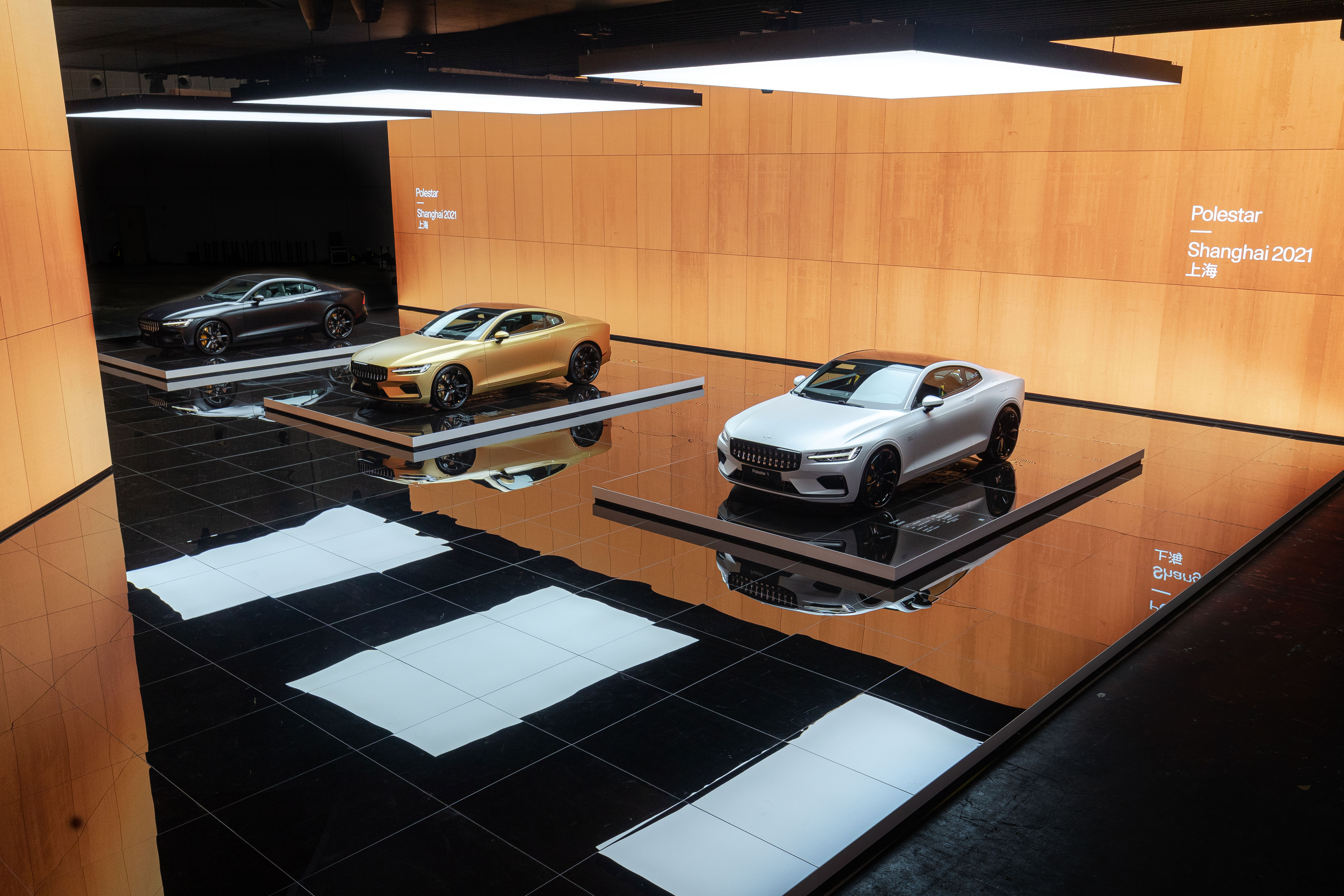
The lineup of Polestar vehicles at the 2021 Shanghai Auto Show. Image Credits: Polestar/Geely Holdings
The EV performance brand of Volvo, which is owned by Geely, displayed the Polestar 1 hybrid electric and the all-electric Polestar 2. It was the 2021 Special Edition in matte gold that got our attention. Granted this is not an all-electric vehicle, just a hybrid, but this special version is worth noting.
This special edition has a lightweight body made from carbon fiber reinforced polymer, twin rear electric motors with genuine torque vectoring and high-performance components like Akebono brakes and adjustable Öhlins dampers. The vehicle’s powertrain produced 619 hp and 738 lb.-ft. of torque, and a purely electric driving range of 60 miles based on the WLTP standard. The vehicle also features a bespoke matte gold exterior paint job with matching calipers and black wheels
Volvo XC40 Recharge
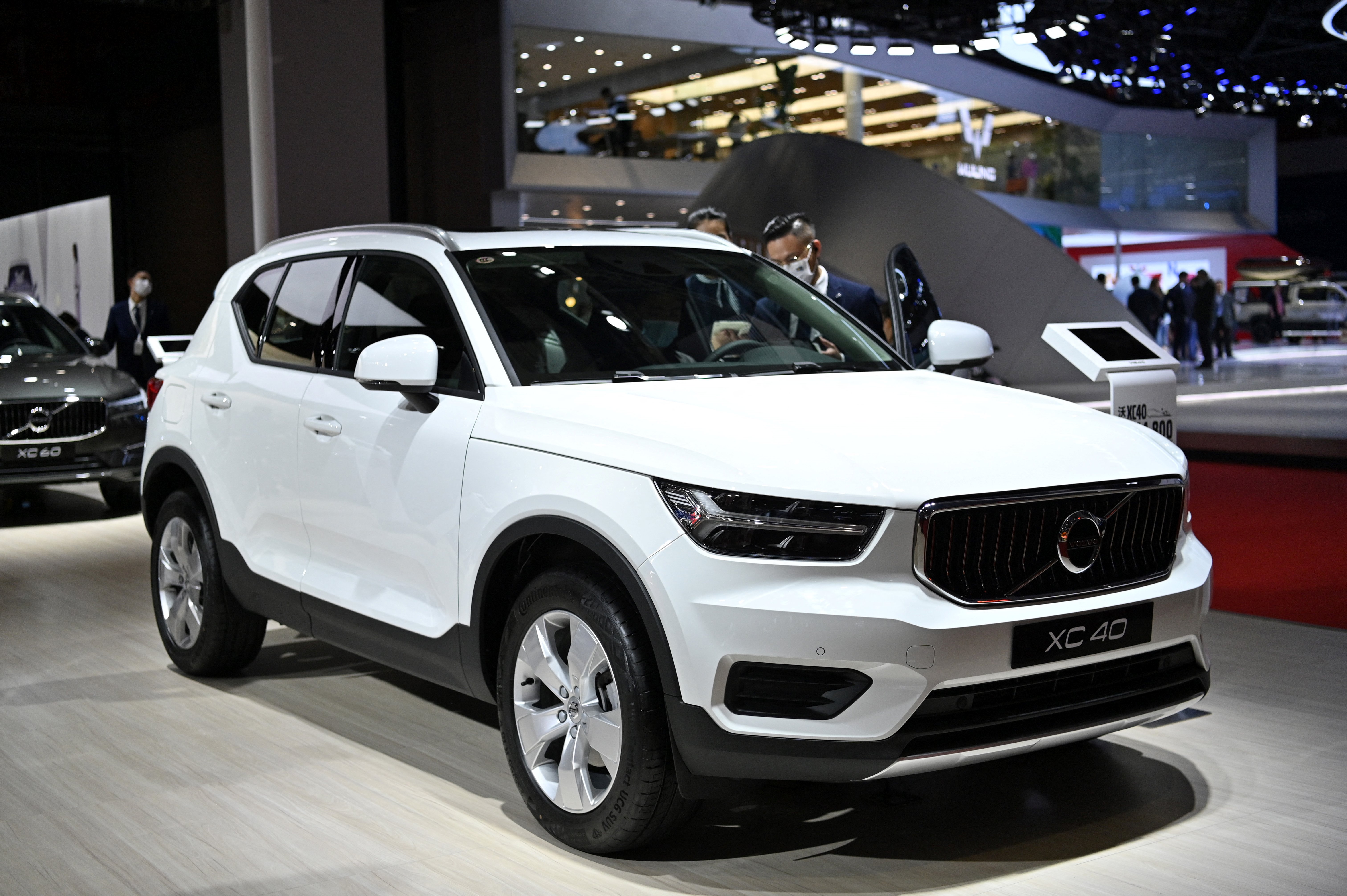
A Volvo XC40 car is seen during the Shanghai Auto Show on April 20, 2021. Image Credits: Hector RETAMAL / AFP via Getty
The Swedish brand, which plans to only sell pure battery-electric models beginning in 2030, brought its first all-electric vehicle to the show: the XC40 Recharge. The company’s next EV will be the C40, the company announced.
Zeekr 001
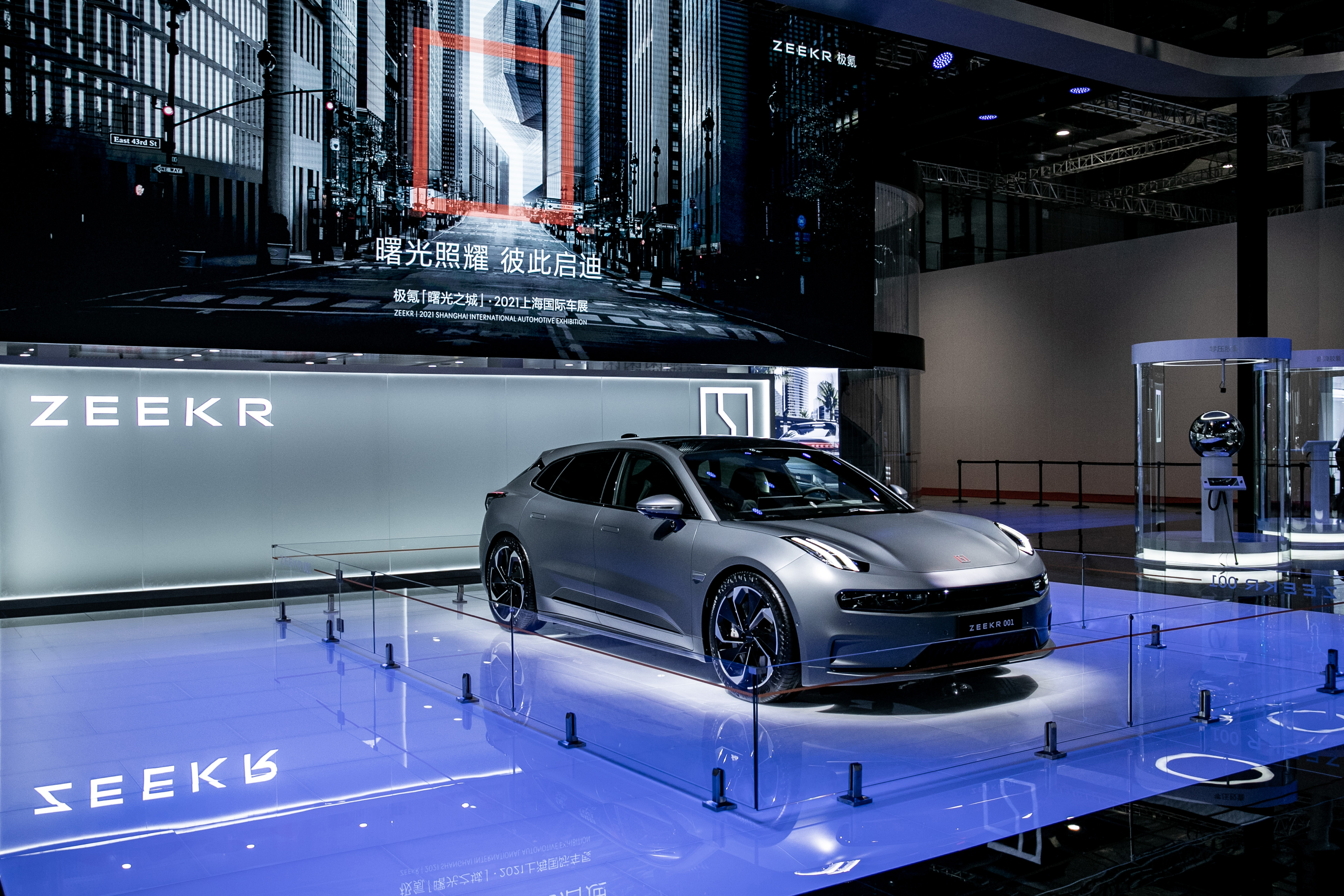
Zeekr revealed its first electric vehicle at the 2021 Shanghai Auto Show. Image Credits: Zeekr/Geely Holdings
And finally, Zeekr brought its flagship (and first) EV called the Zeekr 001. What is a Zeekr? It’s the combination of Z as in Generation Z and “geek,” and its aim is to put software at the forefront.
Zeekr said its cars will also be sold online and through experience centers across China, with plans also to eventually expand to Europe and North America. The Zeekr 001 comes with a dual motor, which sends power to all four wheels — delivering 566 lb-ft. of torque and allowing it to accelerate from 0 to 60mph in less than 4 seconds. The car has a claimed estimated range of more than 700 km (434 miles) on a single charge.
The Zeekr brand said it plans to bring five cars to market in the next five years, all of which will be based on Geely Holdings’ pure electric SEA architecture.
Mercedes
The German automaker showed off several vehicles at the Shanghai Auto Show, notably the EQB and EQS. Both of these all-electric vehicles are part of the company’s growing EQ brand.
EQB
The German automaker revealed the compact mass-market all-electric SUV at the show. The vehicle, which looks a lot like the GLB, especially the interior, will launch in China this year. A global variant will be produced in Hungary for Europe followed, by the U.S. market launch in 2022.
While there are some obvious links to the internal combustion engine GLB, the EQB does have some differences in the exterior design, including the continuous light strip at front and rear that is consistent with other models in the electric EQ brand. The EQB also has light-alloy wheels in a bi- or tri-color design that come in up to 20 inches in size. Some even have rosé gold-colored or blue decorative trim. Mercedes has not yet revealed details on the powertrain, range or price.
EQS
Mercedes-Benz held its own world premiere of its EQ brand flagship ahead of the Shanghai Auto Show. The EQS is the first all-electric luxury sedan under the automaker’s new EQ brand. The first models being introduced to the U.S. market will be the EQS 450+ with 329 hp and the EQS 580 4MATIC with 516 hp. This will be an important vehicle for the Chinese market as well.
This all-electric counterpart to the S-Class is loaded with tech. For instance, there are 350 sensors in the vehicle that are used to record distances, speeds and acceleration, lighting conditions, precipitation and temperatures, the occupancy of seats as well as the driver’s blink of an eye or the passengers’ speech. TechCrunch also had a chance to take the EQS for a spin. Here’s what we thought.
NIO
Nio revealed the interior of its flagship sedan at the auto show, giving us more details on the ET7 which was initially revealed in January. It also announced it will deploy a total of 100 of its branded power swap stations as well as other infrastructure, including 500 charging stations and more than 10,000 destination chargers in eight provinces in China.

The Nio ET7 electric sedan at the 2021 Auto Shanghai on Monday, April 19, 2021. Image Credits: Qilai Shen/Bloomberg via Getty Images
Nio ET7
The ET7 is Nio’s electric flagship sedan. The company officially debuted the interior of the vehicle, which it described as a second living space. The interior comes in three earth-tone color schemes: Storm Gray, Sand Brown and Edelweiss White. The company dropped some hints about possible exterior colors, as well, such as Sunrise Beige, Luminous Orange and Arctic Green, in addition to the established Cloud White, Star Gray, Deep Black and Southern Star.
The ET7’s 150kWh battery gives the car a whopping range of 621 miles under China’s NEDC testing protocol. The NEDC testing is notorious for providing optimistic estimates and will likely be much less than that under Europe’s WLTP testing.
Nio also boasted about its so-called NIO Autonomous Driving technology, which it claims will “gradually deliver the relaxing and safe point-to-point autonomous driving experience in scenarios like an expressway, urban, parking, and battery swap.” That phrasing suggests that this is aspirational and is still squarely under the driver assistance system category. Plus, China regulations require drivers to keep their hands on the wheel and be able to take control at any time.
Nio is expected to begin production of the ET7 in the coming months, with a launch scheduled for Q1 2022.
SAIC-GM
SAIC-GM-Wuling Automobile Co., a joint venture between SAIC Motor Corp., General Motors and Liuzhou Wuling Motors Co. showed off their latest vehicle: the budget-friendly Hong Guang Mini EV that costs less than $5,000.
Hong Guang Mini EV
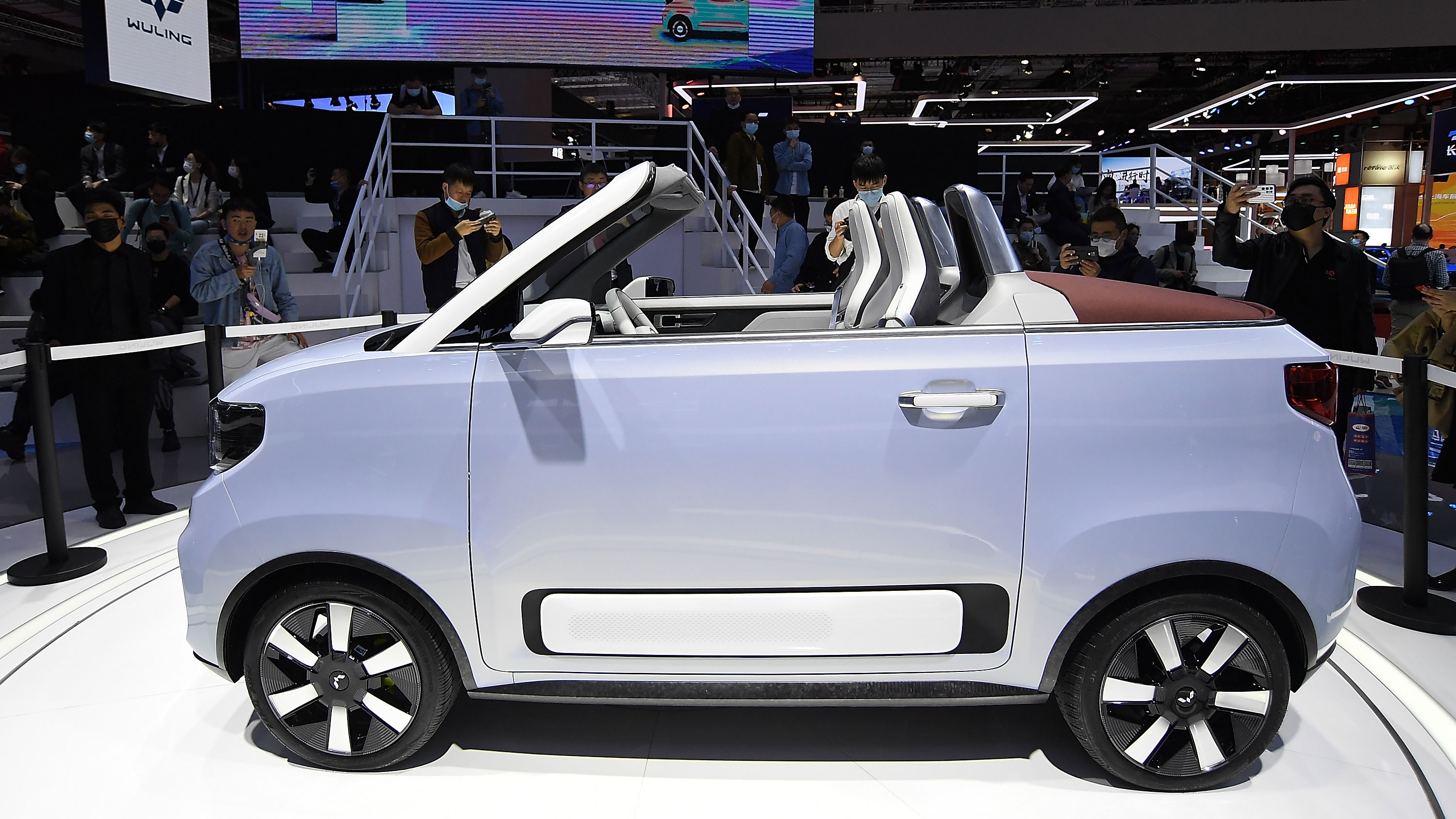
Wuling Hong Guang Mini electric vehicles, manufactured by SAIC-GM-Wuling Automobile Co. Image Credits: Zhe Ji/Getty Images
The Wuling Hong Guang Mini EV, which is also the main photo in this article, is one of the most popular EVs in China this year, with more than 57,000 units sold in February alone, and at $4,230, it’s not hard to see why. The featherweight EV is produced with max efficiency and few parts. A new car is made every minute at the Lizhou, Guangxi factory, and it only takes about four hours to make one from start to finish. The most basic models are truly made for that A to B utility. Both the interior and what’s under the hood make for a very simple, yet functional, vehicle.
The smooth ride of this adorable mini won’t go faster than 62 miles per hour, and a cap of around 75 to 110 miles of range per charge makes it the perfect car for short trips around urban environments. Upgrading to the $5,600 model includes air conditioning and power windows, which really points to the near Spartan nature of the standard model, which comes with an HVAC ventilation system and a simple radio.
Toyota
The Japanese automakers said it will introduce 15 all-electric vehicles, including seven Toyota bZ branded models, globally by 2025. The new bZ brand debuted at the Shanghai Auto Show.
Toyota bZ46

The Toyota bZ4X on display during the 19th Shanghai Auto Show on April 20, 2021. Image Credits: (Photo by Hector RETAMAL / AFP via Getty Images)
The Toyota bZ4X is technically just a concept, but its importance shouldn’t be disregarded. The concept, which was revealed at the Shanghai Auto Show, kicks off a new all-electric lineup for Toyota.
Toyota’s new bZ brand — which stands for beyond zero — will have a dedicated underlying platform that can be used with multiple variations in terms of size and design. The company said that since it is difficult to prepare such a wide range of choices by itself, it is jointly developing the series with partners who boast expertise in various fields. Toyota tapped Subaru to develop the bZ4X. BYD, Daihaitsu and Suzuki are other partners in the bZ line.
Toyota plans to produce the Toyota bZ4X in Japan and China said it hopes to begin worldwide sales of the model by the middle of 2022.
Volkswagen
The German automaker used the Shanghai Auto Show to reveal its third electric vehicle in its ID brand. And this one is designed specifically for the Chinese market.
VW ID 6
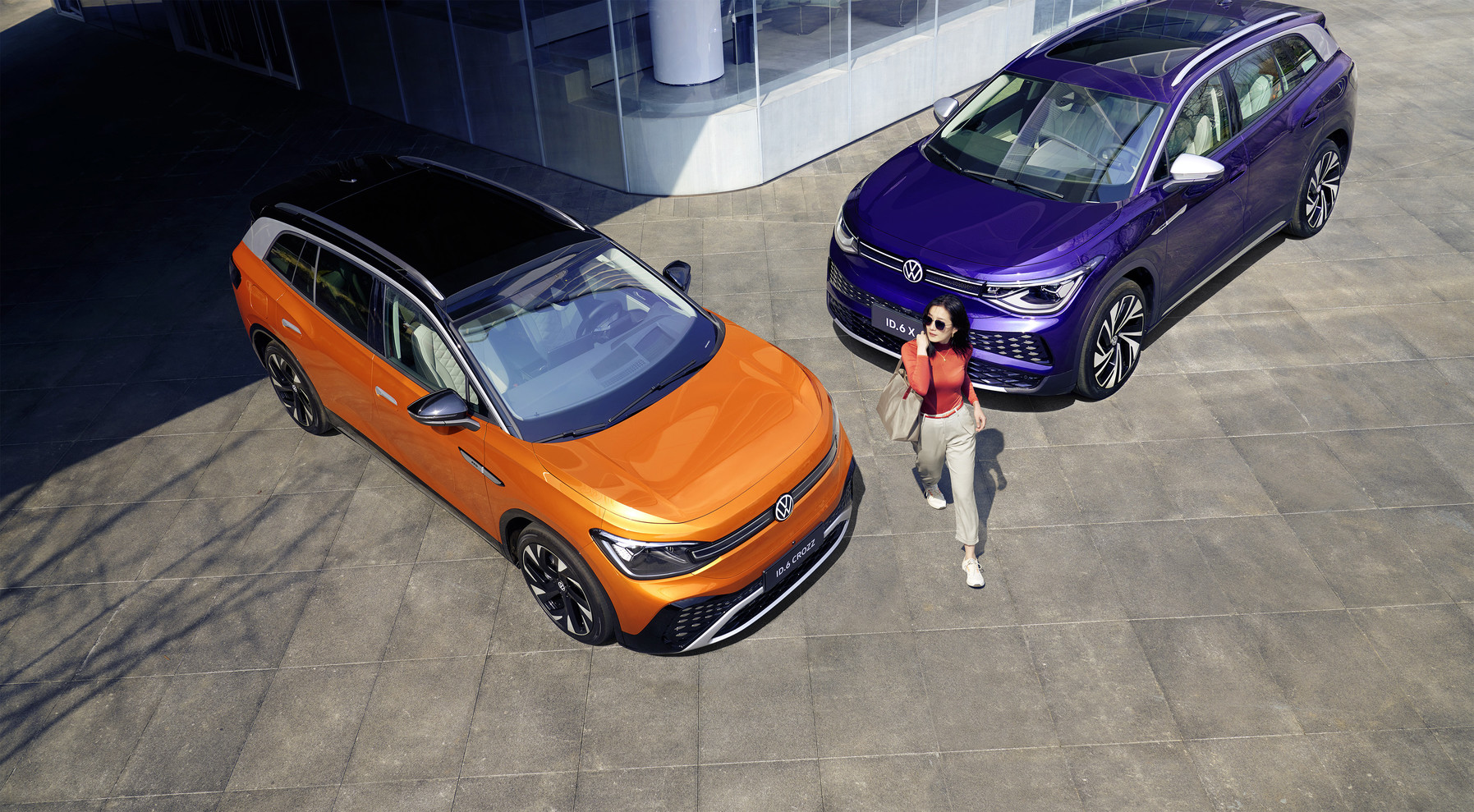
Volkswagen debuted the all-electric ID.6 CROZZ and ID.6 X at the 2021 Shanghai Auto Show. Image Credits: Volkswagen
The VW ID.6 will be available in two versions: The ID.6 CROZZ, which will be manufactured in the north of China and the ID.6 X in the southern part of the country. The ID.6 is VW’s most spacious ID branded model, with room for up to seven people. The vehicle, which is available in four configurations, has a range of up to 588 km (China NEDC).
Xpeng
Xpeng revealed its third vehicle at the Shanghai auto show, one that intends to use lidar in an effort to boost the capabilities of its advanced driver assistance system.
Xpeng P5

The XPeng Inc. P5 electric vehicle at the 2021Shanghai Auto Show. Image Credits: Qilai Shen/Bloomberg via Getty Images
The Xpeng P5 is the Chinese automaker’s third vehicle, but it’s among the first to be produced with a built-in lidar sensor. The company says the two sensors, which are built into both sides of the sedan’s front, can detect and identify pedestrians, other cars, cyclists, scooters and more, no matter the weather or darkness.
Xpeng’s chairman and CEO He Xiaopeng called the P5 is its most advanced and technically ambitious model yet.
The lidar sensors combined with software deliver an advanced driver assistance system that the automaker says pushes it toward full automation. While the sensor and software system is robust, the vehicle is not self driving. As TechCrunch’s Liao reported, Xpeng’s Navigation Guided Pilot system is benchmarked against Tesla’s Navigate On Autopilot and can automatically change lanes, enter or exit ramps, overtake other vehicles and maneuver another car’s sudden cut-in, a common sight in China’s complex road conditions. However, drivers’ hands must remain on the wheel. The carmaker’s ambition is to remove the driver, that is, reach Level 4 autonomy two to four years from now, but real-life implementation will hinge on regulations.

